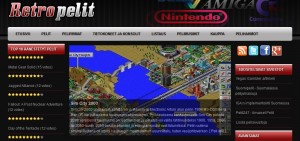DiscGolfPark adds staff, expands United States disc golf course plans
Disc golf course design can vary from region-to-region and even park-to-park in a specific city. After all the designing and coordination, some courses come out nearly perfect. Others though lack in some areas such as variety of holes, safety on the course, or even overall enjoyment.
DiscGolfPark is looking to bring complete disc golf course solutions to any park regardless of the location. Operating as the course product from Discmania, Inc., DiscGolfPark has been instrumental in Europe and other countries around the world in the installation and design of disc golf courses. Today, DiscGolfPark is officially expanding their operations to the United States with a team of eight representatives from around the country:
- Austin Montgomery (Headquarters in California)
- Jamie Thomas (Northern California and Louisiana)
- Chris Fanger (Oregon)
- Patrick Sandvig (Colorado)
- Avery Jenkins (Oklahoma)
- Dana Vicich (Illinois)
- Tim Gostovic (New York)
- Alan Kane (South Carolina)
Erno Väyrynen, the head of DiscGolfPark operations in the US, is leading the team and they have set a goal of 500 DiscGolfParks to be installed in the United States by 2020. With a strong team behind him, and the ambitious goal in front of him, we talked with Väyrynen to learn more about what DiscGolfPark is all about.
Today marks the official introduction of DiscGolfPark to the United States. For those unfamiliar with the project, tell us about DiscGolfPark and the efforts you and the team have put forth in Europe and around the world so far.
“We’ve been selling disc golf courses professionally for over ten years. Back in the day, we used to do the same thing as most companies still do: selling basically just baskets. About ten years ago we realized that we will need to offer a complete solution for our customers. They are not interested in spending time finding out what it takes to build a disc golf course – they’ll rather build something else in their park than spending time learning the process themselves.”
We developed the concept called DiscGolfPark® to address this problem in Finland about ten years ago. With our concept, we provide a full service to the customer. This full service includes everything that is needed to design and install a new disc golf course.
“Everybody following the sport has seen what DiscGolfPark has done for the sport in Finland. A majority of the courses in Finland (approximately 500 in total) have been designed by us. Now we want to do our part to make the US disc golf scene bigger and better. If the US had the same amount of courses as we do in Finland per capita, there would be 30,000 courses in the US today. Instead, there are only 6,000-7,000. So there’s room for thousands and thousands more disc golf courses in this country.”
DiscGolfPark goes beyond just the course design, correct? You really bring in everything involved including teesigns, teepads, etc… How important are these elements of a course that can be easily overlooked?
“Good signage and course equipment enable new people to start playing disc golf. This is a key to growth. At the moment, I would say that the majority of courses don’t have proper signage here in the US. This is not a problem for the club playing regularly at the course, but new people and kids will find it very difficult to figure out what’s happening in the park. When you use good looking and well functioning course equipment, it will elevate the feel and the status of the sport. It’s not just throwing from sidewalk to whatever random looking targets.”

Photo: DiscGolfPark
In the United States, many courses use concrete teepads. DiscGolfPark focuses on fake turf teepads. Why the change and what makes this solution the ideal one?
“The right type of artificial turf teepads have many benefits over concrete ones. For the player, they provide a better grip year-round and saves the soles of your shoes. For the park owner, turf teepads look better and they can be moved to another place if needed.”
Let’s also talk about safety. Many courses are in very busy public parks that tend to be crowded, especially on weekends. What does DiscGolfPark do to help ensure safety for everyone at the park?
“Safety is our number one design priority. Even though I think we should have more courses designed just for disc golf, it’s a fact that this sport will have courses in parks with multiple uses. As the sport grows, it’s not possible to totally avoid accidents – accidents happen everywhere and in every sport. We just need to integrate safety thinking in our course designs and the sport in general better. Disc golf has a very low threshold to begin playing it, and we who are responsible for the facilities, must make sure that we don’t neglect safety. Too many times I’ve seen baskets placed close to parking lots, fairways going close to picnic tables or playgrounds.”
“We train all our designers according to our strict safety standards. We have defined safety distances for example between a basket and a path / parking lot / a residential lot. We will not proceed with a design that does not meet our safety criteria. We explain our safety thinking to our customers, who often don’t have a clue what playing disc golf means when it comes to the other park use. We also give them our folder that explains not only the DiscGolfPark concept, but also the safety standards. They are happy to hear that we take these things into account and they are also willing to take part to safety planning.”
Beyond the teepads and safety, what is holding back disc golf courses in the United States? We see some great courses, but they are few and far between.
“This is a very interesting topic for me as well. I’ve competed in disc golf for almost 15 years now and I like the longer and more challenging courses more than the usual 300 ft hyzer holes. I’ve talked with many local players here in California and they also like longer holes that are not only about the drive and putt. But for some reason courses like this are rare. I tend to think that there’s not just enough player base – yet.”
Another discussion we’ve seen recently is the idea of a “gold course” or even a “black course” where the hole lengths are very long and the difficulty is very hard. How does DiscGolfPark find the balance between creating these difficult courses and also allowing beginners the chance to pick up the sport?
“This is based on what the customer’s benefit is. We discuss the need with them case by case. The sport needs more beginner friendly courses than top caliber championship courses. For example, cities need courses next to schools and resorts for families. Beginner friendly courses can and should be designed so that they offer challenge for the more advanced players as well. The holes should be designed so that they reward versatile throwing skills no matter what the course type is. If an area has existing disc golf activity and a lot of existing players, it will make sense to design more challenging courses if that’s what the customer wants too.”
This also brings up the discussion about pay-to-play courses. Disc golf has been viewed for a while as a sport that is easy to get started with since the vast majority of courses are free to play. Then, due to a lack of funding, many courses tend to drop in quality. Does DiscGolfPark focus on free courses or do you guys look into the paid model as well?
“We think that the majority of disc golf courses will always be free and we like it. This way all of us can enjoy the sport. However, we’ll introduce a pay-to-play concept at the Golf Industry Show in San Diego in February. I think that we need to have the top level facilities and they should be pay-to-play. There’s a real business opportunity in disc golf and when we can harness that, the sport will start to grow for real. Then there’ll be more possibilities for more demanding and longer courses as well.”
You guys have been working for some time now to bring DiscGolfPark to the United States. Why is this the right time to do move things forward?
“We established our US office in early 2014. Since then we have built our basic operations and mainly during the last six months we have really put effort in building our DiscGolfPark logistics and sales network. When we start something, we want to have the capacity to serve customers from all over the country fast.”
The team has set a goal of 500 DiscGolfParks around the world by 2020. That seems like quite a large undertaking. Why the lofty number?
“Whenever you aim for something, aim high enough and plan actions accordingly. Having a clearly defined goal helps the organization reach it. We have built hundreds of courses in a small Nordic country where there’s snow for several months of the year, so it would make no sense to target for less here in the main market of disc golf with a larger sales network. Nevertheless, we realize that this is a big goal and we are working hard every day to meet it.”
To help reach this goal, you’ve brought on course designers from around the country to help make this happen. People like Avery Jenkins and Dana Vicich, two names that anyone who follows the professional disc golf ranks will recognize. Tell us about this new team of designers you’ve put together.
“This is what I’m the most excited about! We started negotiating with a group of people last Spring and early this week we have signed the last agreement we wanted to sign. We have a passionate group of people with us, who have various talents and good connections. We are happy to help them do what they love and make a living through the sport. You can check our network online. They’ll operate mostly in their area and we’ll coordinate everything from the headquarters.”
If someone is interested in working with someone from your team, how can they get started with DiscGolfPark?
“For 2016, we have our team ready to proceed with the plan. We are not looking for new sales people / designers immediately. Anyone interested in future opportunities can email their resume to me at erno.vayrynen@discgolfpark.net. We are grateful for the vast interest so far.”
Thanks to Väyrynen for the conversation. We had the chance to meet Väyrynen at this year’s USDGC and after conversations with him and later talks with Avery Jenkins and Dana Vicich, we can’t wait to see what these guys come up with over the next few years.
The post DiscGolfPark adds staff, expands United States disc golf course plans appeared first on All Things Disc Golf.



